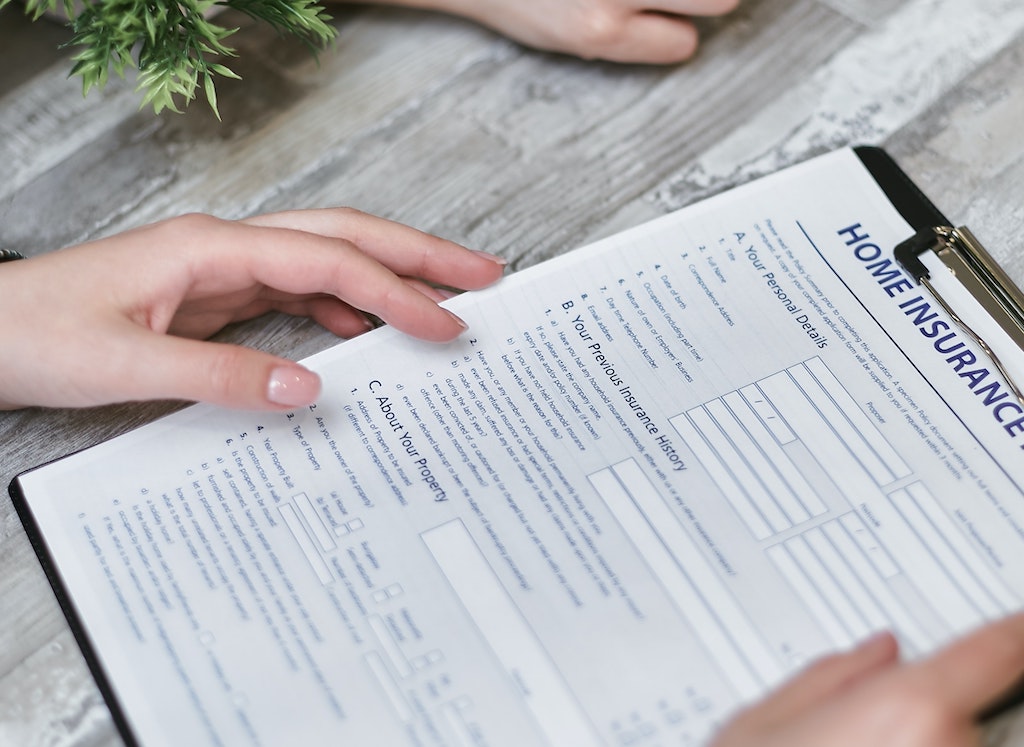Home insurance companies don’t blindly offer coverage; they conduct home insurance inspections to assess risk, ensure policy compliance, and prevent fraud. Preparation is the key to a successful home insurance inspection. Being proactive and informed about the process can help homeowners avoid potential issues, maintain coverage, and possibly even reduce premiums. This article will explore why insurance companies conduct these inspections, when and how often they occur, and, most importantly, how homeowners can ensure a smooth inspection process. Additionally, we’ll share real-life case studies to illustrate the importance of adequate preparation.
Why do insurance companies inspect homes?
Home insurance is crucial to safeguarding a home. Insurance companies, in turn, provide homeowners with financial protection in the event of unforeseen disasters or accidents. However, the insurance industry operates on a foundation of trust, and to maintain that trust, insurers need to ensure that the properties they cover meet certain standards. This is where home insurance inspections come into play.
Risk assessment and coverage verification
One of the primary reasons insurance companies inspect homes is to assess risk accurately. Insurance, at its core, is about managing risk, and insurers need a clear understanding of the potential risks associated with a property before offering coverage.
- Property condition assessment: Insurance companies want to ensure the property is in good condition. They assess the property’s structural integrity, maintenance, and overall state. This assessment helps them gauge the likelihood of property-related incidents, such as structural damage or water leaks.
- Identifying hazards: Insurers also look for hazards or potential liabilities that could lead to claims. This includes identifying safety hazards like faulty wiring, damaged roofs, or unstable structures. By addressing these issues, insurers aim to prevent accidents and claims, ultimately benefiting homeowners and themselves.
- Determining appropriate coverage: Based on the inspection findings, insurers can determine the appropriate coverage for the property. The insurer may adjust the coverage or premium rates if a property is deemed high-risk due to structural issues or safety hazards. This ensures that homeowners receive the right level of protection while mitigating potential losses for the insurer.
In essence, home insurance inspections serve as a critical tool for insurers to gather data and accurately assess the level of risk associated with a property. This data-driven approach enables them to make informed decisions about coverage and pricing.
Compliance with policy requirements
Home insurance policies are not one-size-fits-all; they come with specific requirements and conditions that homeowners must meet. These requirements are in place to ensure that homeowners take necessary precautions to protect their property and prevent accidents. Home insurance inspections confirm that homeowners adhere to these policy requirements.
- Safety features: Many home insurance policies require homeowners to maintain safety features within their properties, such as smoke detectors, carbon monoxide detectors, and security systems. Inspections help verify the presence and functionality of these features, ensuring that they are in working order and providing the intended protection.
- Regular maintenance: Some policies may stipulate that homeowners perform regular maintenance tasks like roof inspections or HVAC system upkeep. Inspections confirm that these maintenance requirements are being met, reducing the risk of claims resulting from neglected maintenance.
- Risk reduction: By enforcing these policy requirements, insurers aim to reduce the overall risk of insuring a property. Well-maintained homes with safety features are less likely to experience significant incidents, such as fires or burglaries, which can lead to costly claims.
This protects the insurer’s interests and helps homeowners maintain a safe and well-maintained property, reducing the likelihood of incidents that could result in insurance claims.
Preventing fraud and misrepresentation
Insurance fraud is a pervasive and costly issue affecting insurers and policyholders. Fraudulent claims can lead to higher premiums for all policyholders and undermine the trust in the insurance industry. Home insurance inspections play a role in preventing fraud and misrepresentation.
- Verifying property condition: Regular inspections allow insurers to verify the actual condition of a property. This helps prevent homeowners from misrepresenting their property’s condition to obtain coverage or file false claims.
- Detecting hidden hazards: Inspections can uncover hidden hazards or safety concerns that a homeowner may not disclose. By identifying these hazards, insurers can ensure appropriate measures are taken to mitigate the risk.
- Assessing claims: In cases where a claim is filed, insurers may conduct post-claim inspections to verify the extent of damage or loss. This helps prevent exaggerated or fraudulent claims and ensures the homeowner receives a fair settlement.
By conducting inspections, insurers can maintain the integrity of the insurance system, which ultimately benefits all policyholders by keeping premiums reasonable and affordable.
When and how often do insurers inspect homes?
Regular inspections are fundamental to an insurance company’s risk assessment process. These inspections are typically scheduled, and homeowners are provided with advance notice. The primary purpose of these scheduled inspections is to evaluate the overall condition of the insured property.
The frequency of regular inspections can vary from one insurance company to another and may also depend on specific factors. However, they generally occur every 1 to 3 years according to the following specifications.
- Insurer’s policies: Each insurance company has policies and guidelines regarding inspection schedules. Some insurers may opt for more frequent inspections, while others may conduct them less frequently.
- Homeowner’s claims history: The homeowner’s claims history can also impact the frequency of inspections. If a homeowner has a history of frequent claims or significant losses, the insurance company may conduct inspections more often to assess and mitigate the associated risks.
- Property characteristics: The type and condition of the insured property can also influence the inspection schedule. Older homes or properties in high-risk areas may be subject to more frequent inspections.
- Regulatory requirements: In some regions, regulatory requirements may govern how often insurance companies must conduct inspections. These requirements can also shape the inspection schedule.
The key takeaway is that regular inspections are planned, systematic assessments that allow insurance companies to stay informed about the condition of the properties they insure.
Unscheduled inspections
In addition to regular inspections, insurance companies may initiate unscheduled inspections under specific circumstances or triggers. These triggers address unique situations and adequately manage the insurance company’s interests and risk exposure. Some common triggers for unscheduled inspections are:
Change in coverage
An inspection may be necessary when a homeowner requests changes to their insurance policy, such as increasing coverage limits or adding endorsements (additional coverage for specific risks). This inspection aims to assess the new risk associated with the policy changes.
For example, suppose a homeowner decides to expand their coverage to include coverage for valuable art collections. In that case, an inspection might be conducted to verify the security measures to protect these assets. This ensures that the policy accurately reflects the property’s current risk profile.
High-risk claims
Following a significant loss or claim on a property, especially if it involves substantial damage or a high payout, the insurance company may conduct an unscheduled inspection. The goal is to verify that the necessary repairs or improvements have been made to mitigate future risks.
For instance, if a home experiences a fire and the homeowner files a claim for extensive damage, the insurer may inspect to confirm that the property has been fully restored to a safe and insurable condition.
Policy cancellations and renewals
At the time of policy renewal, insurance companies may inspect the property as part of their decision-making process. The renewal inspection helps the insurer evaluate whether to renew the policy, especially if there have been substantial changes to the property or if the homeowner’s risk profile has significantly changed.
For instance, if a homeowner has made significant renovations or upgrades to their property during the policy term, the insurer may want to assess these changes before deciding to renew the policy.
Self-inspection options
Some insurance companies offer a unique option for homeowners: self-inspections. In a self-inspection, the homeowner is responsible for assessing their property’s condition and ensuring that it meets the insurer’s requirements. This option is often provided to streamline the inspection process and make it more convenient for homeowners.
Here’s how self-inspections typically work:
- The insurance company provides a checklist or guidelines for the self-inspection.
- The homeowner conducts the inspection, following the provided checklist.
- The homeowner reports the results of the self-inspection to the insurance company.
- While self-inspections can be convenient, homeowners must exercise diligence and accuracy when completing them. Any discrepancies or omissions in the self-inspection can have significant consequences, potentially impacting coverage and claims processing.
Whether they are regular, scheduled inspections or triggered by specific events, these inspections help maintain the integrity of the insurance system while providing homeowners with the protection and coverage they need for their properties. Additionally, self-inspections offer homeowners flexibility but require responsible and thorough attention to detail.
Preparing for a home insurance inspection
Preparing your home for a home insurance inspection is not just about tidying up; it’s about ensuring that your property meets safety standards, is well-maintained, and complies with your insurance policy requirements.
Interior and exterior checklists
Creating comprehensive checklists is a fundamental step in preparing your home for inspection. These checklists help you systematically evaluate the condition of your property’s interior and exterior, ensuring that nothing important is overlooked. Here’s what to include in your checklists:
Interior checklist:
- Smoke and carbon monoxide detectors: Verify that smoke and carbon monoxide detectors are functional. Replace batteries if needed and ensure they are appropriately placed throughout your home.
- Electrical systems: Inspect your electrical systems, outlets, and wiring for any visible issues or hazards. Ensure that electrical panels are accessible and not obstructed.
- Plumbing: Check for any leaks, drips, or plumbing issues. Address any visible problems and consider having a professional plumber assess your plumbing system if needed.
- Safety hazards: Identify and address any safety hazards within your home. This includes loose handrails, exposed wires, or other potential dangers. Make necessary repairs or improvements.
Exterior Checklist:
- Roof Inspection: Examine your roof for damage, missing shingles, or signs of wear. Address any issues promptly, as a well-maintained roof is crucial for preventing water damage.
- Siding, windows, and doors: Inspect the condition of your siding, windows, and doors. Ensure that they are in good repair, sealing properly, and free from visible damage or rot.
- Landscaping and yard maintenance: Maintain a well-kept yard by mowing the lawn, trimming trees and shrubs away from the house, and removing any debris or hazards from walkways and driveways. A tidy yard not only enhances curb appeal but also reduces potential hazards.
By diligently following these interior and exterior checklists, you can address any issues affecting your home insurance inspection.
Addressing safety concerns
Safety is a top priority for both homeowners and insurers. Addressing safety concerns before an inspection is essential to avoid potential issues and ensure that your coverage remains intact. Here are some common safety measures to consider:
- Exterior doors: Install deadbolt locks on exterior doors to enhance security. Secure sliding glass doors with secondary locks or bars to prevent forced entry.
- Stairwell safety: Ensure that handrails on staircases are secure and in good condition. Adequate stairwell lighting is crucial for preventing accidents.
- Walkway safety: Remove any debris or hazards from walkways and driveways. Ensure that paths are well-lit and free from tripping hazards.
- Fire safety: Keep fire extinguishers accessible and regularly check their expiration dates. Ensure that fire escape routes are clear and accessible.
Addressing these safety concerns not only satisfies insurance requirements but also enhances the safety and security of your home, reducing the risk of accidents and potential claims.
Gathering necessary documents
In addition to preparing your property physically, gathering necessary documents is another critical step in home insurance inspection preparation. These documents may be requested during the inspection to verify the condition and maintenance of your home. Here’s what you should consider gathering:
- Receipts for renovations and repairs: Keep records of receipts for any recent renovations or repairs made to your home. This documentation demonstrates that necessary maintenance and improvements have been undertaken.
- Maintenance records: Maintain proof of maintenance for key systems in your home, such as HVAC systems and appliances. Regular maintenance indicates responsible ownership and helps prevent system failures.
- Documentation of upgrades: If you’ve made any upgrades or safety improvements to your home, document them with photos and receipts. These upgrades can positively impact your home’s insurability.
- Property records: Keep property records, including surveys and blueprints, handy. These documents can help verify the property’s structure and boundaries.
By gathering these documents in advance, you’ll be well-prepared to provide evidence of your home’s condition and maintenance history during the inspection, which can help ensure a smoother process and maintain the accuracy of your insurance coverage.
Home insurance inspections are pivotal in ensuring your property’s safety and the continuity of your coverage. By following the provided tips and recommendations, homeowners can empower themselves to protect their investments, maintain policy compliance, and ultimately secure the peace of mind that comes with knowing they have adequate home insurance coverage.




